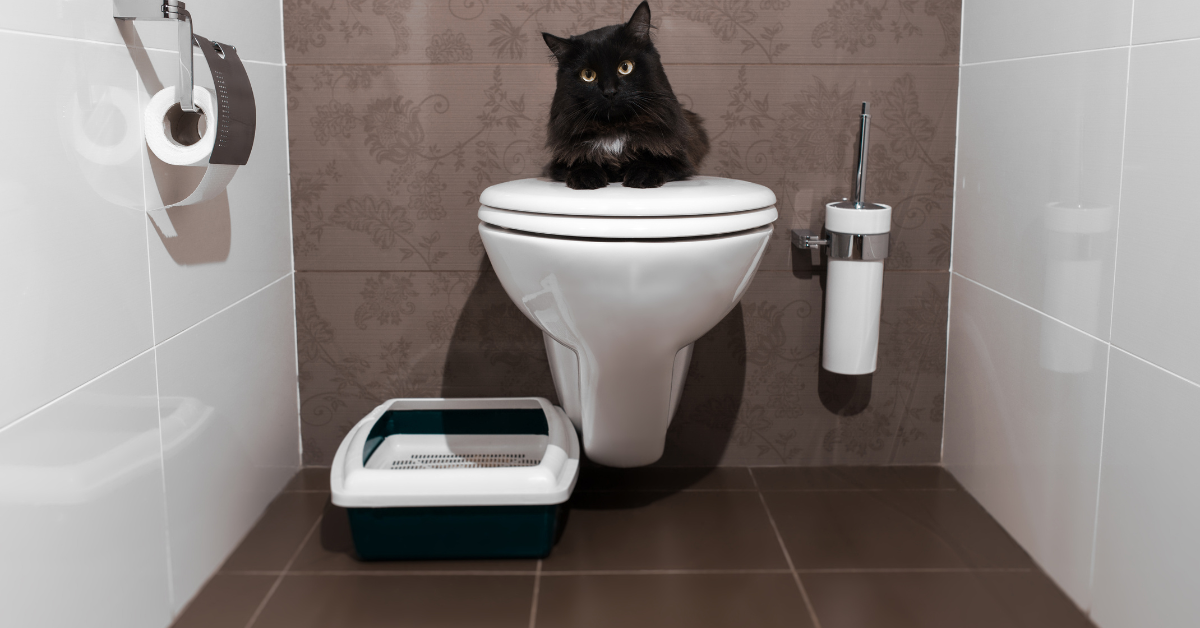Prevent Bathroom Emergencies: Never Flush Cat Poop Down Your Toilet - Expert Guidance
Prevent Bathroom Emergencies: Never Flush Cat Poop Down Your Toilet - Expert Guidance
Blog Article
What are your beliefs about How to Dispose of Cat Poop and Litter Without Plastic Bags?

Introduction
As cat proprietors, it's necessary to be mindful of just how we get rid of our feline friends' waste. While it might seem convenient to purge pet cat poop down the commode, this practice can have detrimental repercussions for both the atmosphere and human health.
Environmental Impact
Purging feline poop introduces damaging pathogens and parasites right into the supply of water, posturing a significant threat to water ecological communities. These pollutants can adversely impact marine life and concession water high quality.
Health Risks
In addition to environmental issues, purging feline waste can additionally present health threats to people. Feline feces might have Toxoplasma gondii, a bloodsucker that can trigger toxoplasmosis-- a potentially serious health problem, specifically for pregnant ladies and individuals with weakened immune systems.
Alternatives to Flushing
Luckily, there are safer and a lot more accountable ways to get rid of feline poop. Consider the adhering to choices:
1. Scoop and Dispose in Trash
One of the most usual method of getting rid of pet cat poop is to scoop it into a naturally degradable bag and throw it in the trash. Make certain to make use of a devoted trash inside story and get rid of the waste immediately.
2. Usage Biodegradable Litter
Choose naturally degradable cat litter made from materials such as corn or wheat. These trashes are eco-friendly and can be securely dealt with in the trash.
3. Hide in the Yard
If you have a yard, consider hiding cat waste in an assigned location far from vegetable yards and water resources. Make sure to dig deep enough to avoid contamination of groundwater.
4. Install a Pet Waste Disposal System
Purchase an animal waste disposal system especially created for feline waste. These systems make use of enzymes to break down the waste, minimizing odor and ecological influence.
Verdict
Accountable pet ownership expands beyond providing food and shelter-- it additionally involves proper waste management. By refraining from purging cat poop down the bathroom and opting for alternate disposal techniques, we can lessen our environmental impact and safeguard human health.
Why Can’t I Flush Cat Poop?
It Spreads a Parasite
Cats are frequently infected with a parasite called toxoplasma gondii. The parasite causes an infection called toxoplasmosis. It is usually harmless to cats. The parasite only uses cat poop as a host for its eggs. Otherwise, the cat’s immune system usually keeps the infection at low enough levels to maintain its own health. But it does not stop the develop of eggs. These eggs are tiny and surprisingly tough. They may survive for a year before they begin to grow. But that’s the problem.
Our wastewater system is not designed to deal with toxoplasmosis eggs. Instead, most eggs will flush from your toilet into sewers and wastewater management plants. After the sewage is treated for many other harmful things in it, it is typically released into local rivers, lakes, or oceans. Here, the toxoplasmosis eggs can find new hosts, including starfish, crabs, otters, and many other wildlife. For many, this is a significant risk to their health. Toxoplasmosis can also end up infecting water sources that are important for agriculture, which means our deer, pigs, and sheep can get infected too.
Is There Risk to Humans?
There can be a risk to human life from flushing cat poop down the toilet. If you do so, the parasites from your cat’s poop can end up in shellfish, game animals, or livestock. If this meat is then served raw or undercooked, the people who eat it can get sick.
In fact, according to the CDC, 40 million people in the United States are infected with toxoplasma gondii. They get it from exposure to infected seafood, or from some kind of cat poop contamination, like drinking from a stream that is contaminated or touching anything that has come into contact with cat poop. That includes just cleaning a cat litter box.
Most people who get infected with these parasites will not develop any symptoms. However, for pregnant women or for those with compromised immune systems, the parasite can cause severe health problems.
How to Handle Cat Poop
The best way to handle cat poop is actually to clean the box more often. The eggs that the parasite sheds will not become active until one to five days after the cat poops. That means that if you clean daily, you’re much less likely to come into direct contact with infectious eggs.
That said, always dispose of cat poop in the garbage and not down the toilet. Wash your hands before and after you clean the litter box, and bring the bag of poop right outside to your garbage bins.
https://trenchlesssolutionsusa.com/why-cant-i-flush-cat-poop/

As a fervent person who reads about Can You Flush Cat Poop Down The Toilet?, I thought sharing that section was sensible. Make sure you take a moment to promote this blog entry if you appreciated it. Thank you so much for your time invested reading it.
Call Today Report this page